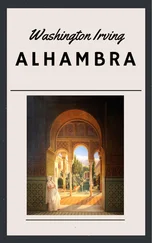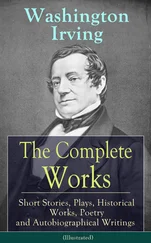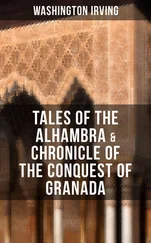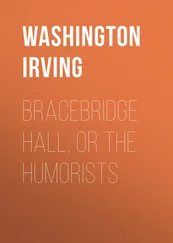Washington Irving - Spanish Papers
Здесь есть возможность читать онлайн «Washington Irving - Spanish Papers» — ознакомительный отрывок электронной книги совершенно бесплатно, а после прочтения отрывка купить полную версию. В некоторых случаях можно слушать аудио, скачать через торрент в формате fb2 и присутствует краткое содержание. Жанр: literature_19, foreign_antique, foreign_prose, на английском языке. Описание произведения, (предисловие) а так же отзывы посетителей доступны на портале библиотеки ЛибКат.
- Название:Spanish Papers
- Автор:
- Жанр:
- Год:неизвестен
- ISBN:нет данных
- Рейтинг книги:4 / 5. Голосов: 1
-
Избранное:Добавить в избранное
- Отзывы:
-
Ваша оценка:
- 80
- 1
- 2
- 3
- 4
- 5
Spanish Papers: краткое содержание, описание и аннотация
Предлагаем к чтению аннотацию, описание, краткое содержание или предисловие (зависит от того, что написал сам автор книги «Spanish Papers»). Если вы не нашли необходимую информацию о книге — напишите в комментариях, мы постараемся отыскать её.
Spanish Papers — читать онлайн ознакомительный отрывок
Ниже представлен текст книги, разбитый по страницам. Система сохранения места последней прочитанной страницы, позволяет с удобством читать онлайн бесплатно книгу «Spanish Papers», без необходимости каждый раз заново искать на чём Вы остановились. Поставьте закладку, и сможете в любой момент перейти на страницу, на которой закончили чтение.
Интервал:
Закладка:
Year after year, however, elapsed, and nothing was heard of Don Roderick; yet, like Sebastian of Portugal and Arthur of England, his name continued to be a rallying-point for popular faith, and the mystery of his end to give rise to romantic fables. At length, when generation after generation had sunk into the grave, and near two centuries had passed and gone, traces were said to be discovered that threw a light on the final fortunes of the unfortunate Roderick. At that time Don Alphonso the Great, king of Leon, had wrested the city of Viseo in Lusitania from the hands of the Moslems. As his soldiers were ranging about the city and its environs, one of them discovered in a field, outside of the walls, a small chapel or hermitage, with a sepulchre in front, on which was inscribed this epitaph in Gothic characters: —
[27] Here lies Roderick, The last King of the Goths.
It has been believed by many that this was the veritable tomb of the monarch, and that in this hermitage he had finished his days in solitary penance. The warrior, as he contemplated the supposed tomb of the once haughty Roderick, forgot all his faults and errors, and shed a soldier’s tear over his memory; but when his thoughts turned to Count Julian, his patriotic indignation broke forth, and with his dagger he inscribed a rude malediction on the stone.
“Accursed,” said he, “be the impious and headlong vengeance of the traitor Julian. He was a murderer of his king, a destroyer of his kindred, a betrayer of his country. May his name be bitter in every mouth, and his memory infamous to all generations.”
Here ends the legend of Don Roderick.
ILLUSTRATIONS OF THE FOREGOING LEGEND
THE TOMB OF RODERICK
The venerable Sebastiano, Bishop of Salamanca, declares that the inscription on the tomb at Viseo in Portugal existed in his time, and that he had seen it. A particular account of the exile and hermit life of Roderick is furnished by Berganza, on the authority of Portuguese chronicles.
“Algunos historiadores Portugueses asseguran, que el Rey Rodrigo, perdida la battalla, huyo a tierra de Merida, y se recogio en el monasterio de Cauliniano, en donde, arrepentido de sus culpas, procuro confessarlas con muchas lagrimas. Deseando mas retiro, y escogiendo por compañero a un monge llamado Roman, y elevando la Imagen de Nazareth, que Cyriaco monge de nacion griego avra traido de Jerusalem al monasterio de Cauliniano, se subio á un monte muy aspero, que estaba sobre el mar, junto al lugar de Pederneyra. Vivio Rodrigo en compania de el monge en el hueco de una gruta por espacio de un año; despues se passo á la ermita de san Miguel, que estaba cerca de Viseo, en donde murio y fue sepultado.
“Puedese ver esta relacion en las notas de Don Thomas Tamayo sobre Paulo deacano. El chronicon de san Millan, que llega hasta el año 883, deze que, hasta su tiempo, si ignora el fin del Rey Rodrigo. Pocos años despues el Rey Don Alonzo el Magno, aviéndo ganado la ciudad de Viseo, encontro en una iglesia el epitafio que en romance dize – aqui yaze, Rodrigo, ultimo Rey de los Godos.” — Berganza , L. i. c. 13.
THE CAVE OF HERCULES
As the story of the necromantic tower is one of the most famous as well as least credible points in the history of Don Roderick, it may be well to fortify or buttress it by some account of another marvel of the city of Toledo. This ancient city, which dates its existence almost from the time of the flood, claiming as its founder Tubal, the son of Japhet, and grandson of Noah, [28] Salazar, Hist. Gran. Cardinal. Prologo , vol. i. plan 1.
has been the warrior hold of many generations and a strange diversity of races. It bears traces of the artifices and devices of its various occupants, and is full of mysteries and subjects for antiquarian conjecture and perplexity. It is built upon a high rocky promontory, with the Tagus brawling round its base, and is overlooked by cragged and precipitous hills. These hills abound with clefts and caverns; and the promontory itself, on which the city is built, bears traces of vaults and subterraneous habitations, which are occasionally discovered under the ruins of ancient houses, or beneath the churches and convents.
These are supposed by some to have been the habitations or retreats of the primitive inhabitants; for it was the custom of the ancients, according to Pliny, to make caves in high and rocky places, and live in them through fear of floods; and such a precaution, says the worthy Don Pedro de Roxas, in his history of Toledo, was natural enough among the first Toledans, seeing that they founded their city shortly after the deluge, while the memory of it was still fresh in their minds.
Some have supposed these secret caves and vaults to have been places of concealment of the inhabitants and their treasure during times of war and violence; or rude temples for the performance of religious ceremonies in times of persecution. There are not wanting other, and grave writers, who give them a still darker purpose. In these caves, say they, were taught the diabolical mysteries of magic; and here were performed those infernal ceremonies and incantations horrible in the eyes of God and man. “History,” says the worthy Don Pedro de Roxas, “is full of accounts that the magi taught and performed their magic and their superstitious rites in profound caves and secret places; because as this art of the devil was prohibited from the very origin of Christianity, they always sought for hidden places in which to practice it.” In the time of the Moors this art, we are told, was publicly taught at their universities, the same as astronomy, philosophy, and mathematics, and at no place was it cultivated with more success than at Toledo. Hence this city has ever been darkly renowned for mystic science; insomuch that the magic art was called by the French, and by other nations, the Arte Toledana.
Of all the marvels, however, of this ancient, picturesque, romantic, and necromantic city, none in modern times surpass the Cave of Hercules, if we may take the account of Don Pedro de Roxas for authentic. The entrance to this cave is within the church of San Gines, situated in nearly the highest part of the city. The portal is secured by massy doors, opening within the walls of the church, but which are kept rigorously closed. The cavern extends under the city and beneath the bed of the Tagus to the distance of three leagues beyond. It is, in some places, of rare architecture, built of small stones curiously wrought, and supported by columns and arches.
In the year 1546 an account of this cavern was given to the archbishop and Cardinal Don Juan Martinez Siliceo, who, desirous of examining it, ordered the entrance to be cleaned. A number of persons, furnished with provisions, lanterns, and cords, then went in, and, having proceeded about half a league, came to a place where there was a kind of chapel or temple, having a table or altar, with several statues of bronze in niches or on pedestals.
While they were regarding this mysterious scene of ancient worship or incantation, one of the statues fell, with a noise that echoed through the cavern, and smote the hearts of the adventurers with terror. Recovering from their alarm, they proceeded onward, but were soon again dismayed by a roaring and rushing sound that increased as they advanced. It was made by a furious and turbulent stream, the dark waters of which were too deep and broad and rapid to be crossed. By this time their hearts were so chilled with awe, and their thoughts so bewildered, that they could not seek any other passage by which they might advance; so they turned back and hastened out of the cave. It was nightfall when they sallied forth, and they were so much affected by the terror they had undergone, and by the cold and damp air of the cavern, to which they were the more sensible from its being in the summer, that all of them fell sick and several of them died. Whether the archbishop was encouraged to pursue his research and gratify his curiosity, the history does not mention.
Читать дальшеИнтервал:
Закладка:
Похожие книги на «Spanish Papers»
Представляем Вашему вниманию похожие книги на «Spanish Papers» списком для выбора. Мы отобрали схожую по названию и смыслу литературу в надежде предоставить читателям больше вариантов отыскать новые, интересные, ещё непрочитанные произведения.
Обсуждение, отзывы о книге «Spanish Papers» и просто собственные мнения читателей. Оставьте ваши комментарии, напишите, что Вы думаете о произведении, его смысле или главных героях. Укажите что конкретно понравилось, а что нет, и почему Вы так считаете.












